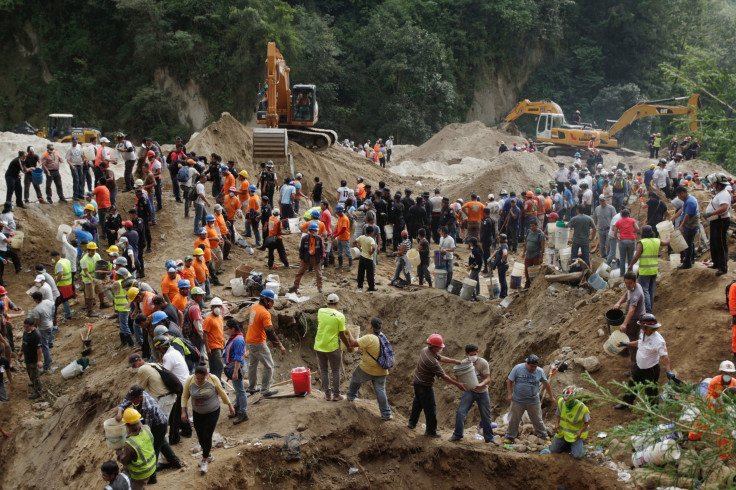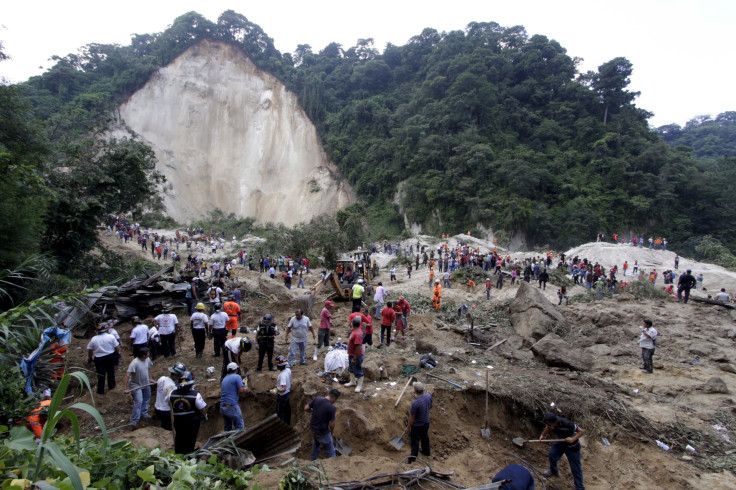Guatemala Mudslide Update: Death Toll Rises In Santa Catarina Pinula With Hundreds Still Missing

UPDATE 9:30 p.m. EDT: The death toll rose to 73 Saturday night in the Guatemala landslide as fears mounted hundreds could be dead. Rescue workers combed through mounds of rubble in search if the missing.
"We have enough hope to keep looking, even if just one more person gets out alive," Sergio Cabanas, a senior official at disaster agency Conre, told a news conference despite an admission it was unlikely any more survivors would be found, Reuters reported.
Original post:
At least 18 more bodies were recovered by rescue workers Saturday following one of the worst mudslides to strike Guatemala in recent memory. The death toll rose to 48, with about 350 people still missing, according to the Spanish EFE news agency, citing local emergency services.
Suben a 48 los muertos y permanece en 350 el número de desaparecidos por alud en #ElCambray de #Guatemala
— ACAN-EFE (@ACAN_EFE) October 3, 2015Diggers ceaselessly worked through the enormous pile of dirt and debris that tumbled Thursday night onto ramshackle homes in Santa Catarina Pinula, a poor village on the outskirts of Guatemala City. Reports Friday said as many as 600 people were missing after rainfall loosened the soil from a deforested hillside, sending an avalanche of mud, trees and rocks onto the neighborhood.
Families and friends of the missing gathered at an improvised morgue nearby to find out if any of the recovered bodies belonged to loved ones, Reuters reported Saturday. Firefighters were joined by Guatemalan soldiers and locals in the rescue efforts, hoping against time that they might find survivors trapped inside their collapsed and buried homes.
In October 2005, a similar land collapse occurred in the central Guatemalan town of Panabaj. Hundreds of people died in that landslide, and many of the bodies were never recovered. Survivors spent weeks in shelters following that disaster.

Deforestation is a leading cause of landslide fatalities. As hillside trees and vegetation are removed, the chance of landslides increases, especially in parts of the world prone to heavy tropical rains and seasonal storms. Guatemala loses about 1.2 percent of its forested land annually, according to the United Nation’s Food and Agriculture Organization.
"The landslide came down from one place, then spread because there were no big trees to hold it back," Esteban Ajtzip Alvarado said of the Panabaj mudslide when speaking to the Guardian for a 2009 report about the impact of Guatemala's deforestation.
Hillsides are often cleared by impoverished locals to use the wood for cooking and heating fuel. Despite efforts by global nongovernmental groups like the Alliance for International Reforestation, lack of funding means many of these hillsides remain looming rainy-season threats to thousands of communities in Guatemala.
© Copyright IBTimes 2025. All rights reserved.






















